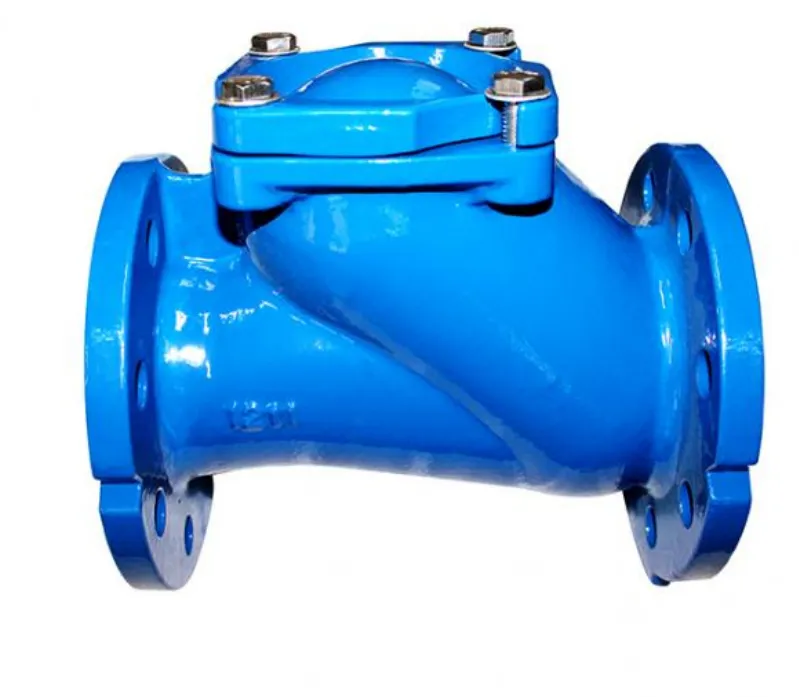Nov . 07, 2024 13:02 Back to list
Choosing the Right Y-Type Strainer Valve for Your Piping System Needs
Understanding Y-Type Strainer Valves A Comprehensive Guide
In industrial applications and various fluid systems, the effective management of fluid flow is paramount. One critical component that helps in this management is the Y-type strainer valve. This article delves into the design, functionality, installation, and benefits of Y-type strainer valves, providing a comprehensive overview for engineers and facility managers alike.
What is a Y-Type Strainer Valve?
A Y-type strainer valve, also known as a Y-strainer, is a type of filter used in piping systems to remove dirt, debris, and other particulate matter from fluids. The design resembles the letter “Y,” with the inlet and outlet ports positioned at two sides and the cleaning port situated at the bottom. This configuration allows for easy cleaning without having to disconnect the strainer from the pipeline.
Y-type strainers are commonly used in various industries, including chemical processing, oil and gas, water treatment, and HVAC systems. They can be installed in both horizontal and vertical pipelines, making them versatile for different applications.
Design and Construction
Y-type strainers are typically made from durable materials such as stainless steel, carbon steel, or brass, depending on the application and the type of fluid being filtered. The choice of material is critical, as it influences the strainer's ability to withstand corrosive environments and high pressures.
The core component of a Y-type strainer is the filtering element, which can be a perforated plate, mesh screen, or basket. The screen’s size will vary based on the intended application and the size of the particles to be filtered. A fine mesh is suitable for applications requiring the removal of small particles, while a coarser mesh is sufficient for larger debris.
Functionality
The operation of a Y-type strainer valve is straightforward. As fluid flows through the strainer, the filtering element captures unwanted particles, allowing clean fluid to pass through to the downstream system. Over time, these particles accumulate in the strainer, potentially restricting flow.
Regular maintenance is required to ensure optimal performance. The strainer can be cleaned through its dedicated cleaning port. By removing the cap for the cleaning port, maintenance personnel can flush out the accumulated debris without disassembling the entire plumbing system.
Installation Best Practices
y type strainer valve

When installing a Y-type strainer, several factors must be considered. Firstly, ensure the strainer is placed in the correct orientation; the inlet and outlet should align with the flow direction indicated on the body of the strainer. Improper orientation can result in inefficient filtration and increased pressure drops.
Secondly, the location of the strainer is crucial. It should be positioned near pumps, equipment in need of protection, and whenever materials may introduce debris into the system. Proper accessibility is also essential for routine maintenance and cleaning.
Moreover, it’s advisable to install a valve upstream of the strainer to allow for isolation during maintenance. This precaution enables personnel to service the strainer without interrupting the entire system.
Benefits of Y-Type Strainer Valves
1. Efficient Filtration Y-type strainers effectively capture a wide range of particle sizes, safeguarding downstream equipment from wear and tear.
2. Ease of Maintenance The design allows for easy cleaning, reducing system downtime and maintenance costs.
3. Versatility Suitable for various applications, Y-type strainers can handle different fluid types, including liquid, gas, and steam.
4. Space-Saving Design Their compact build makes them ideal for installations where space is limited.
5. Cost-Effective Solution By preventing damage to downstream equipment, Y-type strainers can save significant repair and replacement costs over time.
Conclusion
Y-type strainer valves play a vital role in the maintenance and efficiency of fluid systems. Their effective filtration capabilities, ease of maintenance, and versatile applications make them an essential component in various industries. Understanding their functionality and best practices for installation can help facility managers and engineers optimize the performance of their systems, ensuring longevity and reliability in their operations. As technology continues to advance, the design and materials used in Y-type strainers will no doubt evolve, further enhancing their utility in modern applications.
-
Why Metric Trapezoidal Thread is Ideal for Precision Motion ControlNewsAug.05,2025
-
The Unique Properties of a Block of Granite for Industrial UseNewsAug.05,2025
-
The Role of Flanged Y Strainers in Preventing Pipeline ClogsNewsAug.05,2025
-
The Importance of Regular Calibration for Master Ring GagesNewsAug.05,2025
-
How a Cast Iron Surface Table Enhances Accuracy in ManufacturingNewsAug.05,2025
-
Comparing Different Check Valve Types for Optimal Flow ControlNewsAug.05,2025
Related PRODUCTS









